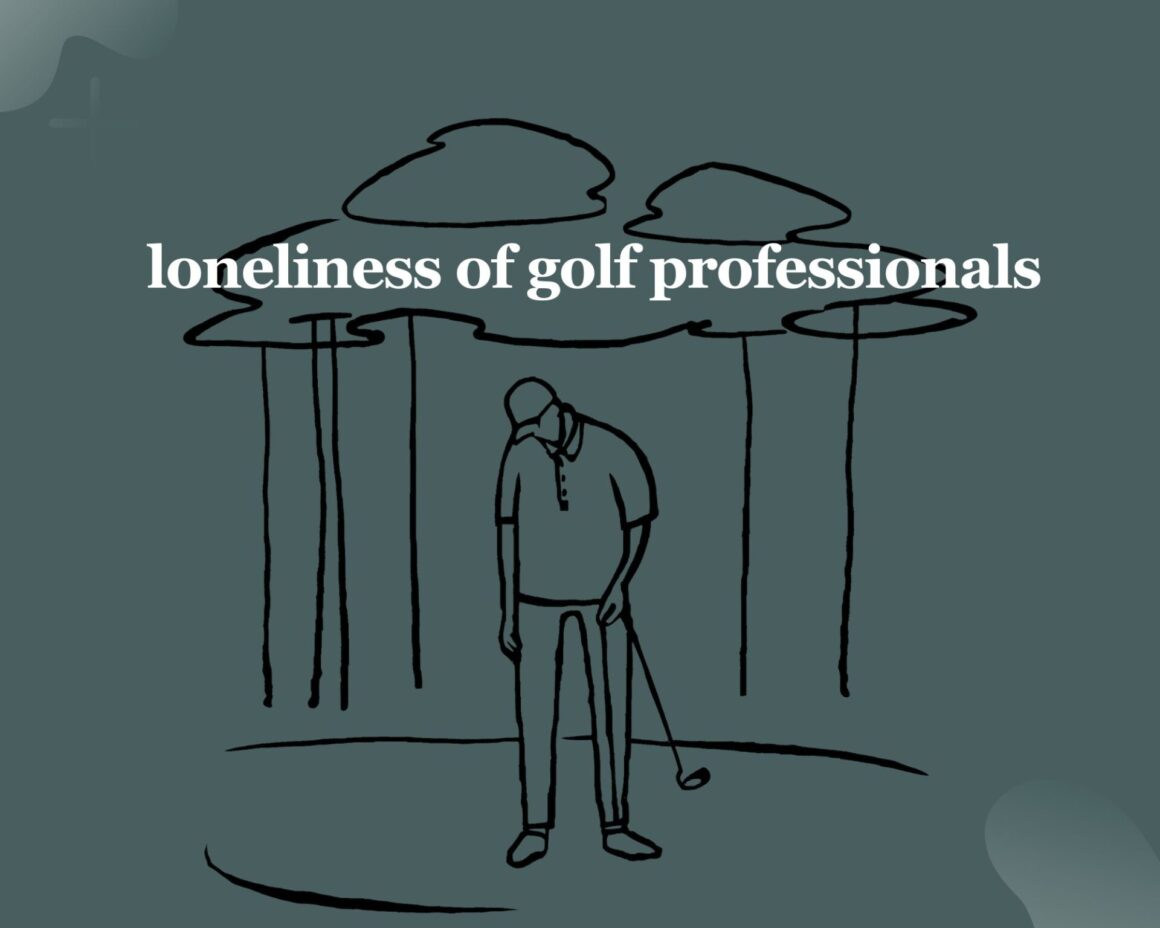Following the death of Grayson Murray last month, many golf professionals are now speaking out about the frustrations, challenges and loneliness that come with being a professional golfer on tour. So far, hardly anyone has dared to talk about it openly. In the male-dominated world, you definitely didn’t want to look like a “wimp” and thus expose yourself to perceived nakedness.
So there might be a coach or a caddy waiting at a driving range to help read the greens – not to mention a few hundred fans lining the fairways, excitedly watching the pros practice, their smartphones in the air hold to record the whole event. Hardly any players seek help from a psychologist.
The tee is the loneliest place on the course
But when it comes to the first tee at a tournament in front of thousands of spectators and TV cameras, the tee can feel like the loneliest place on the golf course. The player’s name, his nation and his merits are called out. No matter how long you’re a professional golfer, there’s hardly a player who doesn’t feel a slight tingling sensation in their stomach. It can probably only be compared to an opera singer or actor stepping onto the stage.
The whole sport can indeed be isolating, a crazy, lonely activity where the rewards are all too often fleeting and the failures overwhelming. “The unfortunate thing about what we do is that it is so lonely and very difficult,” said golf pro Scotti Scheffler.
Too often I think that players are so dependent on each other for results and outcomes and that individual sports in particular are so frustrating and so hard. There are those really lonely times when you missed the cut, for example.
You throw the clubs in the car, drive to the hotel, quickly pack your belongings and just want to leave.
Player friends now speak openly to each other about the frustrations, challenges and loneliness that come with professional golf. The last few weeks have highlighted some of the mental health challenges faced by professional golfers and individual athletes in general.
On June 13th start in Pinehurst on the famous Pinehurst No. 2 (one of 6 places there) the US Open. From what we hear, many players are still reeling from the sudden loss of colleague Grayson Murray, a popular 30-year PGA Tour member. He died by suicide a few hours after withdrawing from the Charles Schwab Challenge in Fort Worth, Texas. Murray had spoken openly over the years about his struggles with depression, anxiety and alcohol.
Golf professionals are not cut out for tour life
“We were not designed to live this life alone,” said Scottie Scheffler, a friend of Murray’s who is currently the world’s best golfer, in a eulogy about Murray. “We all carry a lot more baggage than we admit – including myself.”
In the past, many years ago, I remember that many, many very prominent golfers, such as Tom Watson, to name just one example, suffered from alcohol problems. Watson even made this public. As a superstar of the time, he also tried to deal with the pressure of professional sport.
Lexi Thompson, a 29-year-old LPGA star on the women’s pro tour, also surprised the golf world when she announced plans to retire at the end of the season, citing mental health “struggles” among other things and the pressures of life on tour.
Difficult to reconcile with a private life
The annual rush around the globe, from continent to continent, leads to inner loneliness. The failure of many marriages, see Tiger Woods or more recently Rory McIlroy, is also one of the dark sides of professional life. Social bonds and friendships are very rare in this business. I sometimes compare professional golf to boxing, except that there is no physical violence in the “golf ring”.
A while ago I discussed with a golf instructor and he couldn’t understand why a top pro on the tour was playing an 85. This, he said, would never happen to him. It’s difficult to explain this pressure to someone when you’re competing in big tournaments or races. Not only from my own experience but also from many confidential conversations with athlete friends, including those from other sports, such as ski racing, I know what goes through a top athlete’s mind when he is at the start. Friendships have often developed here, across all sports, because everyone knows about the pressure that lies on a sports professional.
It is still part of the business not to let this pressure show to the media and fans. So the impression easily arises: How can he play this 85?
Dear readers, believe me, the argument that he or she receives a lot of money for it applies to very few professionals. I hardly know any professional athletes who play their sport primarily because of the money. No, it’s mainly the love for his sport. I wish you the same for this golf season.
yours




